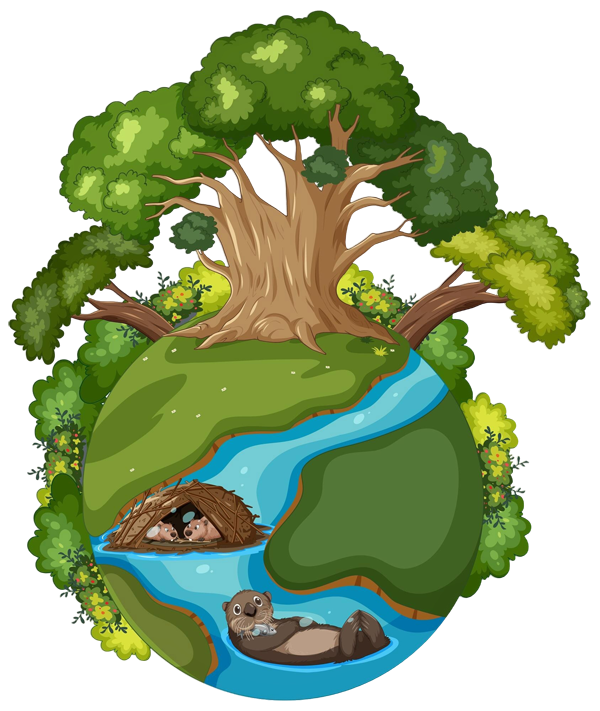
An image which may or may not be related to the article. FREEPIK
Rare Animal Reappearances: Species Thought Extinct That Came Back
Summary:
In the annals of extinction, a few rare creatures have made a defiant return, shaking off the dust of history like characters in a long-forgotten story. These are the Lazarus species, the ones who come back from the brink, reminding us that nature still holds a few tricks up her sleeve. From deep-sea fish to jungle-dwelling marsupials, let’s dive into the miraculous, mysterious, and often maddening tales of species we thought were gone forever—only to reemerge when we least expected it.
The world has a name for them: Lazarus species. Like their biblical namesake, these creatures were declared dead, only to rise again and give us a jolt of wild, untamed hope.
But don’t be fooled into thinking these are fairy tales with neat, happy endings. These stories are messy, chaotic, and full of questions. Where were they hiding? How did we miss them? And more importantly, what happens now that they’re back?
The Coelacanth: A Fossil Come to Life
The coelacanth was supposed to be history—a relic of the Devonian period, dead for 66 million years. Then, in 1938, a fisherman off the coast of South Africa hauled up a catch that sent shockwaves through the scientific community.
This wasn’t just a fish; it was a living fossil, a creature that had survived mass extinctions and outlasted the dinosaurs. With its lobe-like fins and otherworldly appearance, the coelacanth looked less like a fish and more like something pulled straight from a prehistoric fever dream.
And yet, for all its ancient resilience, the coelacanth remains fragile. Found in deep, underwater caves, it clings to the edges of existence, reminding us that survival is never guaranteed—even for those who’ve outlived a meteor.
The Night Parrot: Feathered Ghost of the Outback
Australia’s outback is a brutal, unrelenting place—a landscape of extremes where survival is as much about luck as it is about resilience. It was here, among the endless sands and twisted scrub, that the night parrot became a ghost.
Last seen in the 1800s, the night parrot was declared extinct—or so we thought. Then, in 2013, a naturalist named John Young captured blurry images of the elusive bird. Skeptics scoffed, but soon more evidence emerged: feathers, calls, even live sightings.
The night parrot isn’t just rare—it’s practically mythical, a bird so secretive that even now, researchers tread carefully, fearful that too much attention might push it back into obscurity.
The Lord Howe Island Stick Insect: A Six-Legged Lazarus
Let’s talk about the stick insect—a creature so bizarre it looks like it crawled out of a Tim Burton film. Once thought extinct after rats decimated its habitat on Lord Howe Island, this six-legged oddity was rediscovered in 2001, clinging to a single bush on a remote volcanic rock.
Dubbed the “tree lobster” for its size, this insect is a survivor in every sense. Conservationists have since bred them in captivity, hoping to reintroduce them to their original home. But the journey from extinction to recovery is a precarious one, and the stick insect’s story is far from over.
Why Lazarus Species Matter
These miraculous reappearances are more than feel-good stories—they’re wake-up calls. They remind us that nature is resilient, yes, but also precarious. For every coelacanth or night parrot that resurfaces, countless other species slip quietly into oblivion, unnoticed and unmourned.
Lazarus species challenge our arrogance. They show us how little we truly know about the world, how much we’ve missed, and how many mysteries still lurk in the shadows. But they also force us to confront an uncomfortable truth: just because something comes back doesn’t mean it’s safe.
Survival is a fragile thing, and these creatures often return to a world that’s even harsher than the one they left. Habitat loss, climate change, and human interference continue to threaten their existence.
Nature’s Last Laugh
There’s something poetic, almost mischievous, about these reappearances. It’s as if nature is reminding us that she doesn’t play by our rules. You think you’ve cataloged it all? Think again. You think you know what’s extinct and what’s not? Guess again.
But this isn’t just a game—it’s a warning. These Lazarus species are nature’s way of showing us the edge of the cliff we’re standing on. They’re proof that life can endure against all odds, but also that it can vanish in an instant.
Scrolling through grainy photos of ghostly birds and ancient fish, I can’t help but feel a strange mix of hope and dread. Hope for the resilience of life, for the sheer audacity of survival. And dread for what their stories say about us—our carelessness, our hubris, our tendency to take and take until there’s nothing left.
These creatures are miracles, yes. But they’re also warnings, echoes of a world that’s slipping through our fingers. If we want to keep them—if we want to hold onto the wonder and mystery they represent—we need to wake up.
Because while Lazarus may rise again, there’s no guarantee he’ll stay.
 muppazine
muppazine